Abstract
A 4-yr-old female patient who has recurrent infections with encapsulated bacteria and gramnegative organisms was found to have a complete absence of total hemolytic complement and C3. Total hemolytic complement was reconstituted by the addition of functionally pure C3. With the exception of a moderately reduced homolytic C4, all other C components, measured homolytically and by radial immunodiffusion, were present in normal amounts. By Ouchterlong analysis, the patient's serum contained C3b inactivator and properdin but no antigenic C3. Activation of the alternate pathway was examined by purified cobra venom factor (CVF) and inulin. Neither of these substances led to activation of properdin factor B to B. On addition of partially purified Cordis C3, in four out of four instances and with different preparations of Cordis C3, activation of factor B to B occurred in the inulin-serum-C3 mixture. In contrast, activation of factor B to B occurred only once out of four times with CVF-serum-C3 mixtures. Immune adherence was found to be normal in the patient's serum and could be removed by anti-C4 antiserum of hydrazine treatment. A marked opsonic defect was present against Escherichia coli. Serum bactericidal activity against a rough strain of E. coli was also defective. The ability to mobilize an infalmmatory response was examined by Rebuck skin window technique. A delay in neutrophil migration occurred until the 6th h. In vitro lymphocyte transformation and serum immunoglobulins were normal. The proportion of peripheral blood T cells forming spontaneous sheep erythrocyte rosettes and the percentage of B cells forming EAC rosettes by the C3 receptor were normal. The significance of the absence of C3 in our patient is emphasized by the increased number of infections with encapsulated bacteria and the decreased functional biological activities of the C system, important in host defense mechanism(s).
Full text
PDF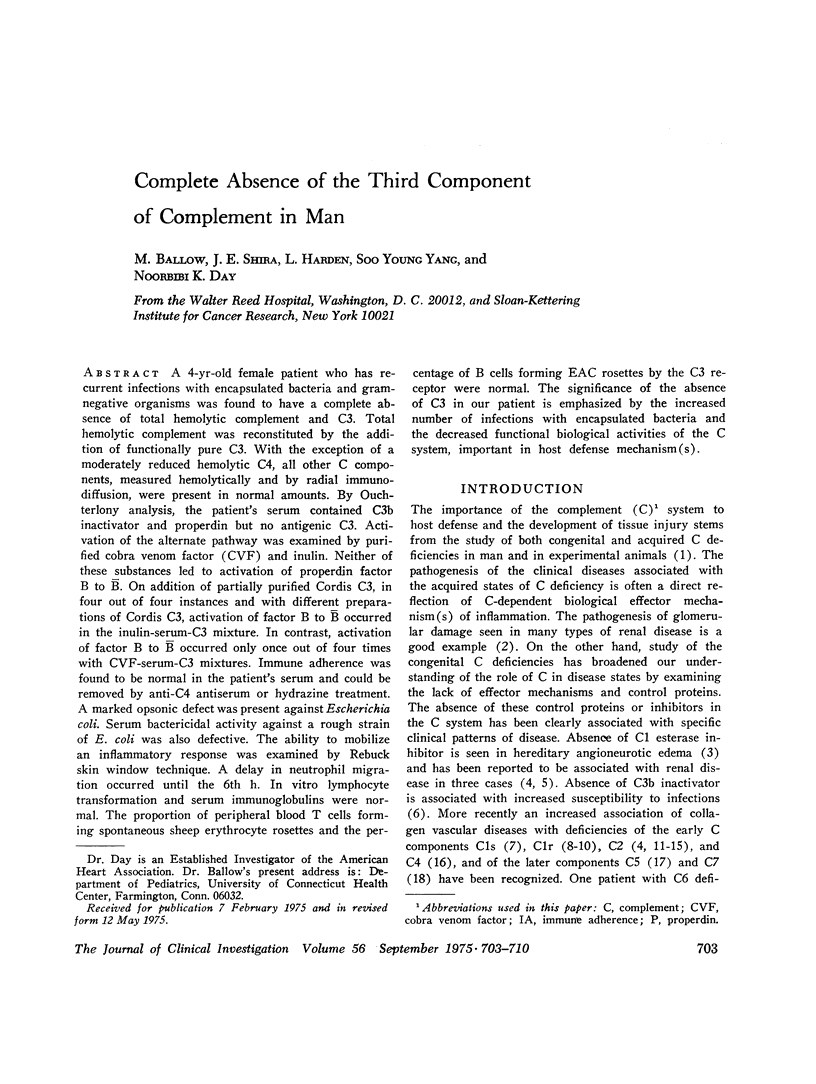
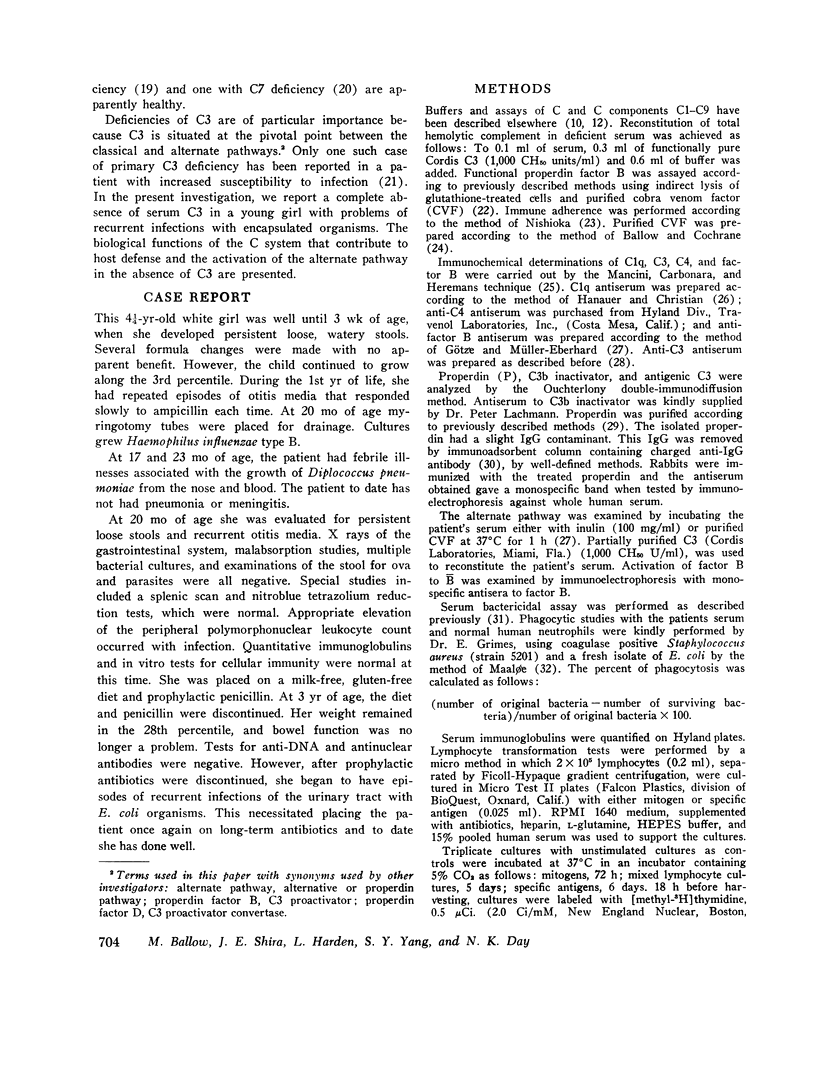
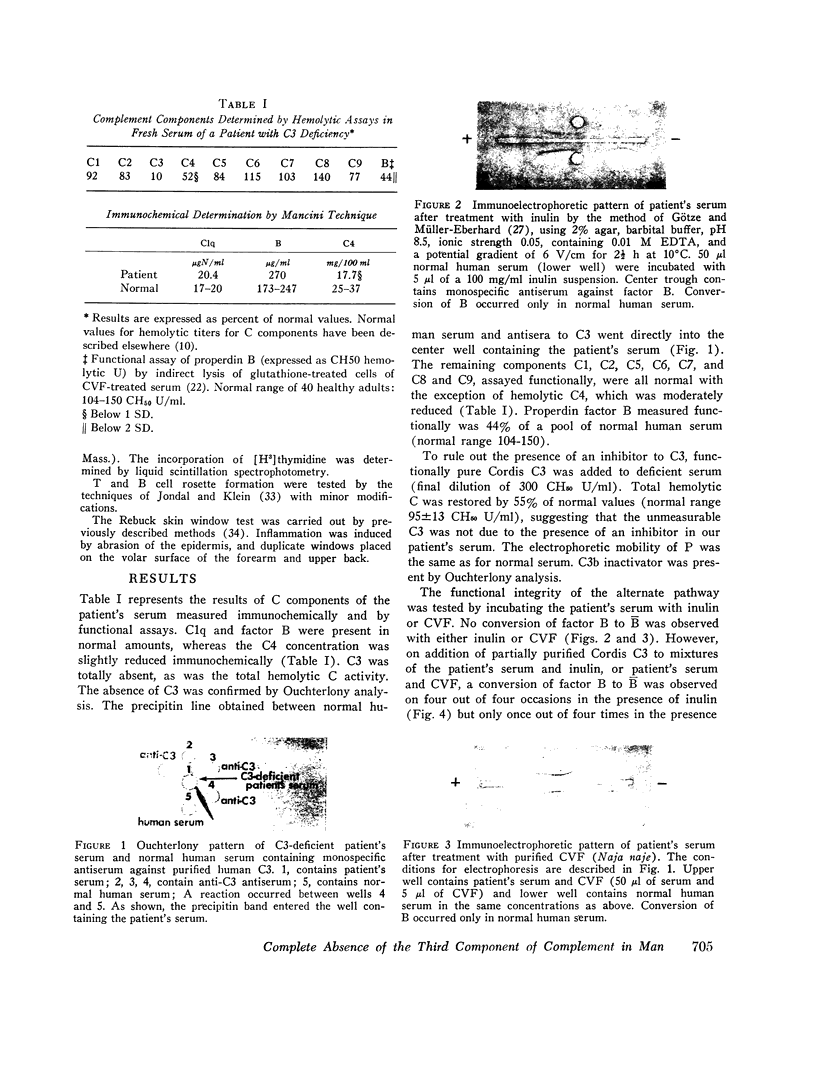
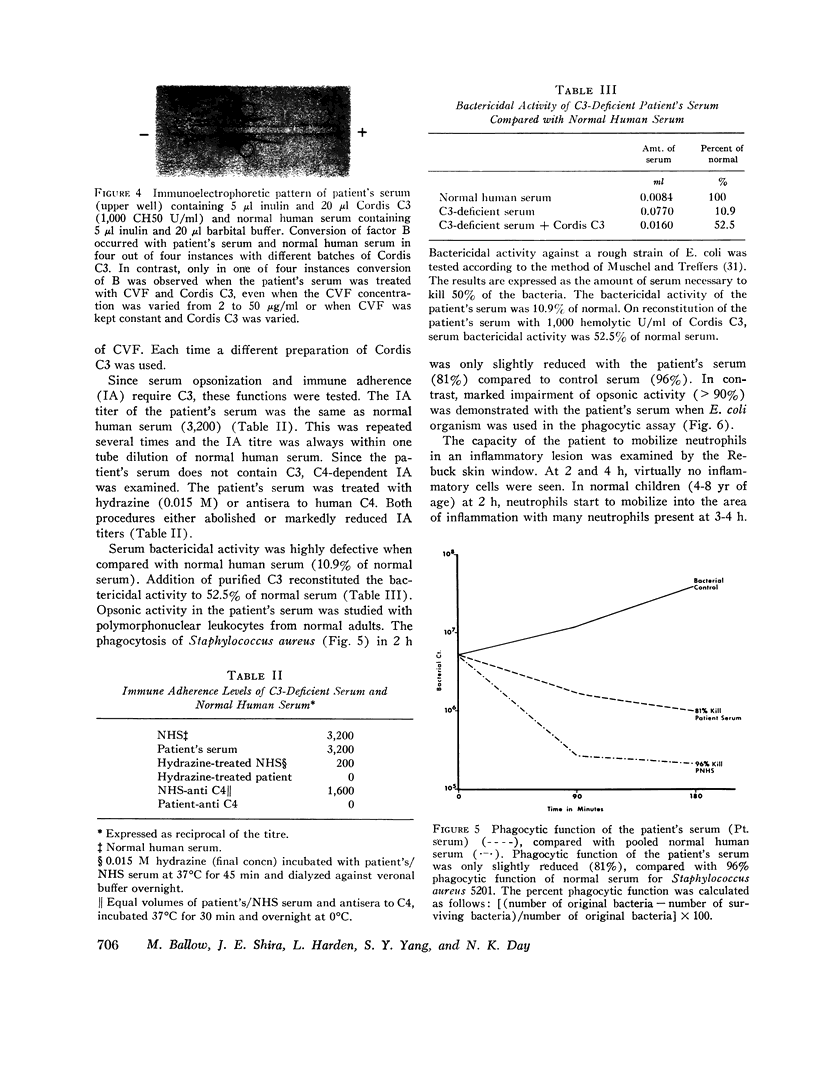
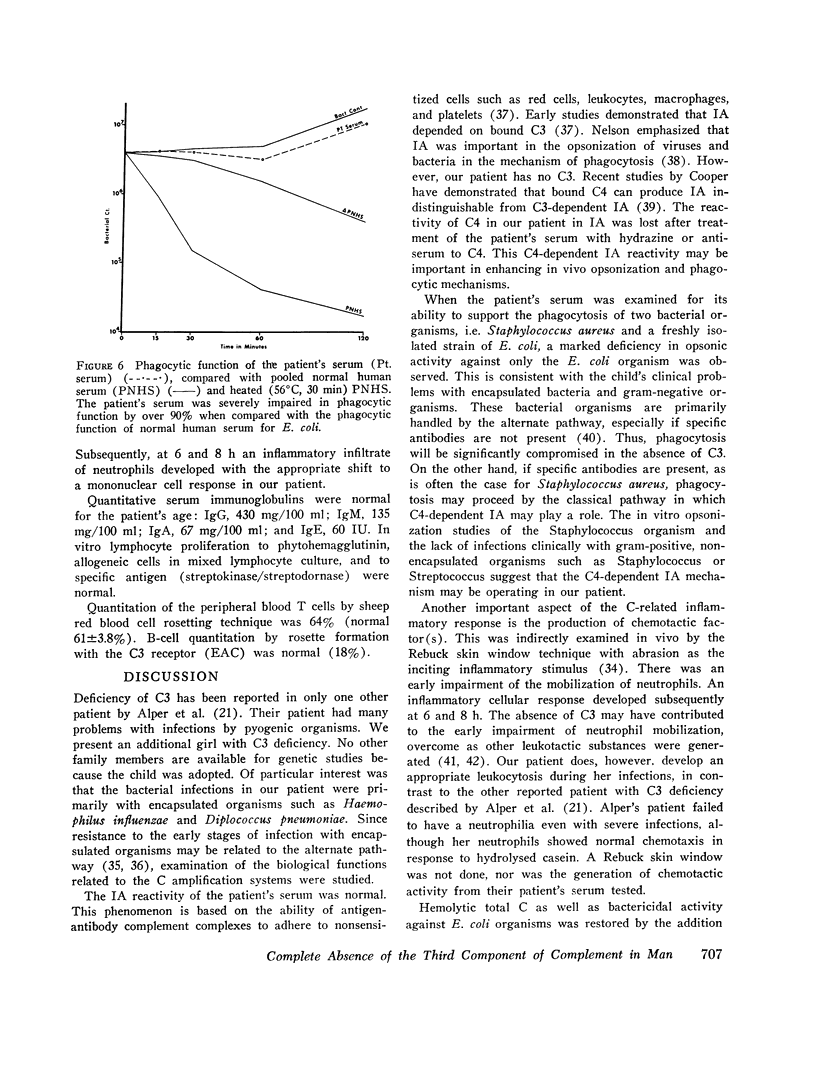
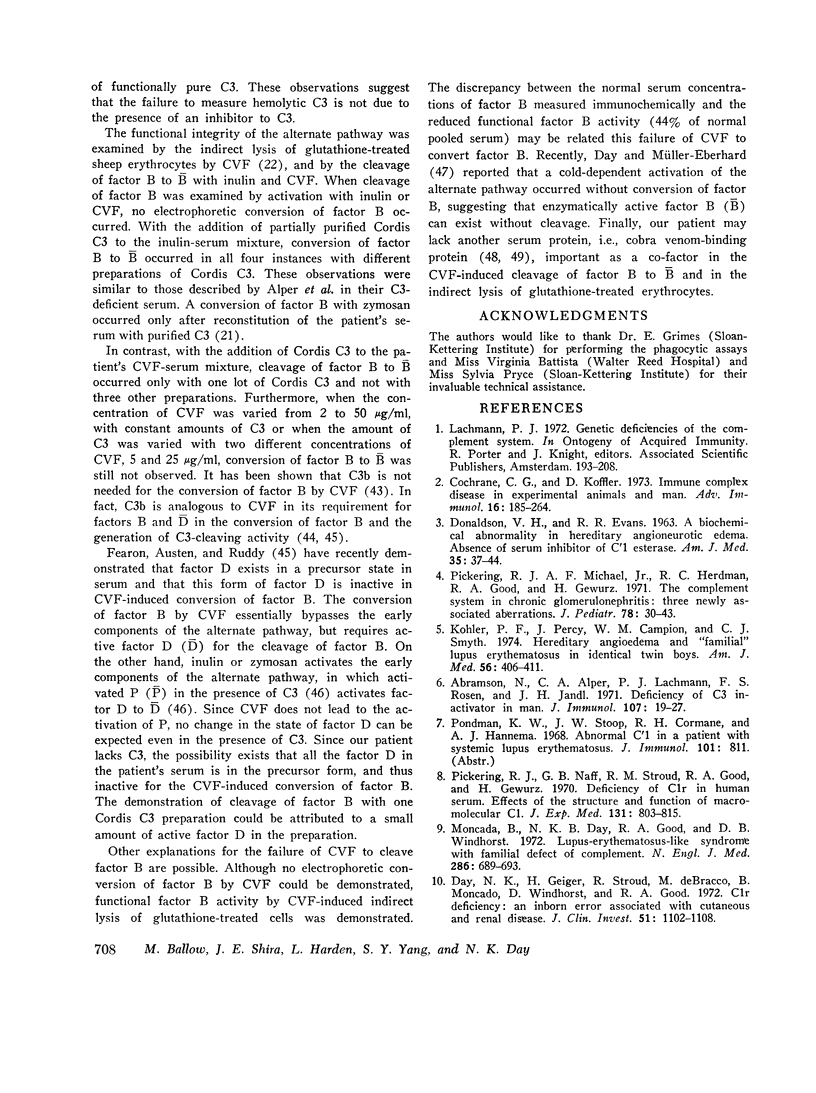
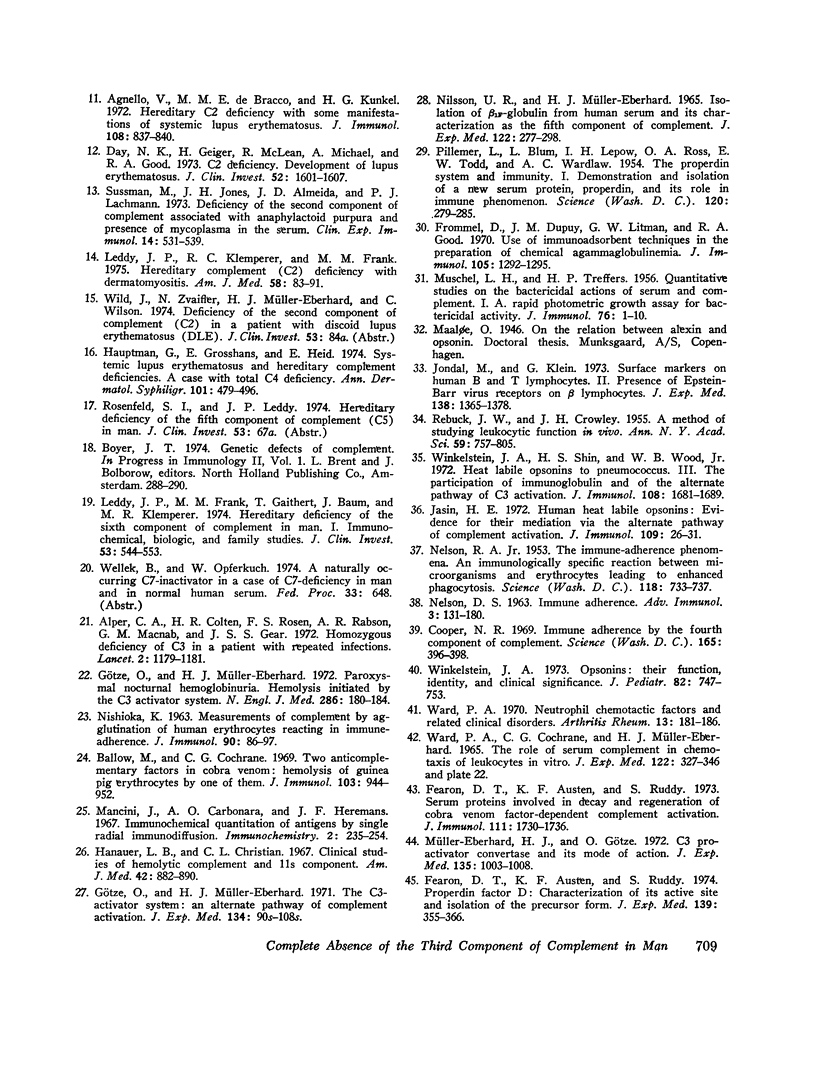
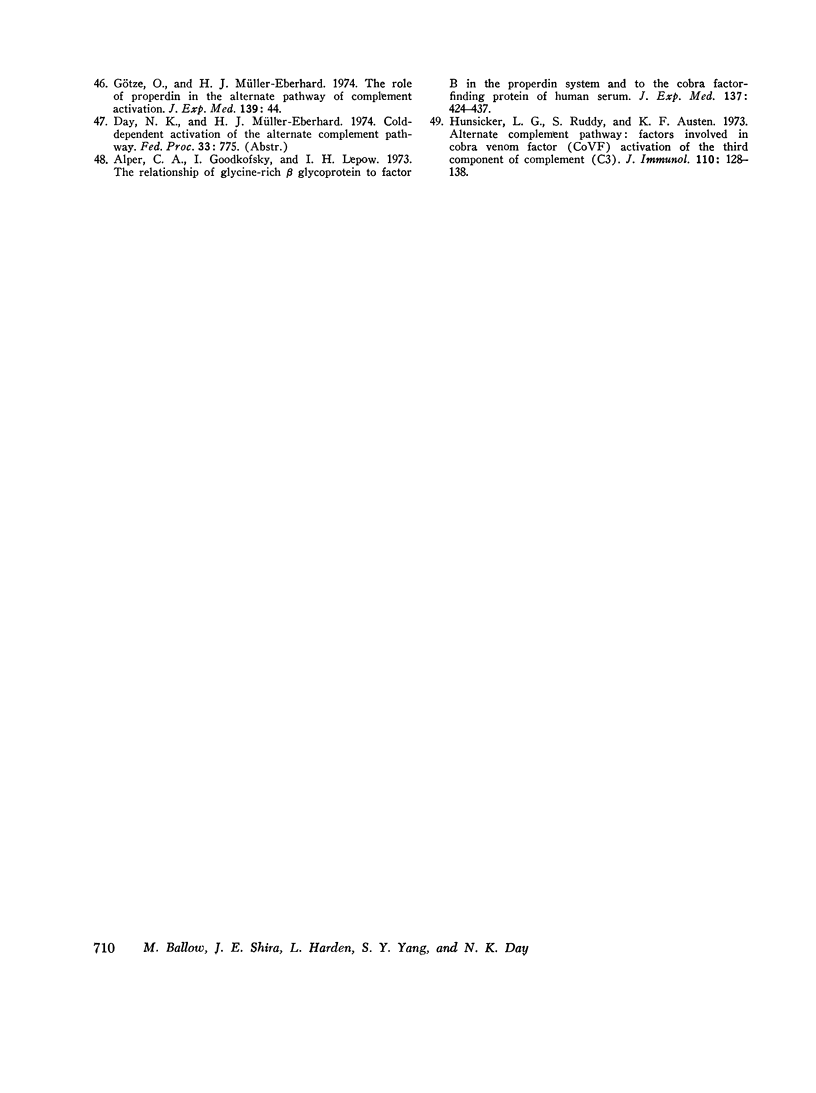
Images in this article
Selected References
These references are in PubMed. This may not be the complete list of references from this article.
- Abramson N., Alper C. A., Lachmann P. J., Rosen F. S., Jandl J. H. Deficiency of C3 inactivator in man. J Immunol. 1971 Jul;107(1):19–27. [PubMed] [Google Scholar]
- Agnello V., De Bracco M. M., Kunkel H. G. Hereditary C2 deficiency with some manifestations of systemic lupus erythematosus. J Immunol. 1972 Mar;108(3):837–840. [PubMed] [Google Scholar]
- Alper C. A., Colten H. R., Rosen F. S., Rabson A. R., Macnab G. M., Gear J. S. Homozygous deficiency of C3 in a patient with repeated infections. Lancet. 1972 Dec 2;2(7788):1179–1181. doi: 10.1016/s0140-6736(72)92598-6. [DOI] [PubMed] [Google Scholar]
- Alper C. A., Goodkofsky I., Lepow I. H. The relationship of glycine-rich -glycoprotein to factor B in the properdin system and to the cobra factor-binding protein of huan serum. J Exp Med. 1973 Feb 1;137(2):424–437. doi: 10.1084/jem.137.2.424. [DOI] [PMC free article] [PubMed] [Google Scholar]
- Ballow M., Cochrane C. G. Two anticomplementary factors in cobra venom: hemolysis of guinea pig erythrocytes by one of them. J Immunol. 1969 Nov;103(5):944–952. [PubMed] [Google Scholar]
- Cochrane C. G., Koffler D. Immune complex disease in experimental animals and man. Adv Immunol. 1973;16(0):185–264. doi: 10.1016/s0065-2776(08)60298-9. [DOI] [PubMed] [Google Scholar]
- Cooper N. R. Immune adherence by the fourth component of complement. Science. 1969 Jul 25;165(3891):396–398. doi: 10.1126/science.165.3891.396. [DOI] [PubMed] [Google Scholar]
- Day N. K., Geiger H., McLean R., Michael A., Good R. A. C2 deficiency. Development of lupus erythematosus. J Clin Invest. 1973 Jul;52(7):1601–1607. doi: 10.1172/JCI107337. [DOI] [PMC free article] [PubMed] [Google Scholar]
- Day N. K., Geiger H., Stroud R., DeBracco M., Mancaido B., Windhorst D., Good R. A. C1r deficiency: an inborn error associated with cutaneous and renal disease. J Clin Invest. 1972 May;51(5):1102–1108. doi: 10.1172/JCI106902. [DOI] [PMC free article] [PubMed] [Google Scholar]
- Fearon D. T., Austen K. F., Ruddy S. Properdin factor D: characterization of its active site and isolation of the precursor form. J Exp Med. 1974 Feb 1;139(2):355–366. doi: 10.1084/jem.139.2.355. [DOI] [PMC free article] [PubMed] [Google Scholar]
- Fearon D. T., Austen K. F., Ruddy S. Serum proteins involved in decay and regeneration of cobra venom factor-dependent complement activation. J Immunol. 1973 Dec;111(6):1730–1736. [PubMed] [Google Scholar]
- Frommel D., Dupuy J. M., Litman G. W., Good R. A. Use of immunoadsorption techniques in the preparation of chemical agammaglobulinemia. J Immunol. 1970 Nov;105(5):1292–1293. [PubMed] [Google Scholar]
- Götze O., Müller-Eberhard H. J. Paroxysmal nocturnal hemoglobinuria. Hemolysis initiated by the C3 activator system. N Engl J Med. 1972 Jan 27;286(4):180–184. doi: 10.1056/NEJM197201272860403. [DOI] [PubMed] [Google Scholar]
- Götze O., Müller-Eberhard H. J. The C3-activator system: an alternate pathway of complement activation. J Exp Med. 1971 Sep 1;134(3 Pt 2):90s–108s. [PubMed] [Google Scholar]
- Hanauer L. B., Christian C. L. Clinical studies of hemolytic complement and the 11S component. Am J Med. 1967 Jun;42(6):882–890. doi: 10.1016/0002-9343(67)90069-1. [DOI] [PubMed] [Google Scholar]
- Hunsicker L. G., Ruddy S., Austen K. F. Alternate complement pathway: factors involved in cobra venom factor (CoVF) activation of the third component of complement (C3). J Immunol. 1973 Jan;110(1):128–138. [PubMed] [Google Scholar]
- Jasin H. E. Human heat labile opsonins: evidence for their mediation via the alternate pathway of complement activation. J Immunol. 1972 Jul;109(1):26–31. [PubMed] [Google Scholar]
- Jondal M., Klein G. Surface markers on human B and T lymphocytes. II. Presence of Epstein-Barr virus receptors on B lymphocytes. J Exp Med. 1973 Dec 1;138(6):1365–1378. doi: 10.1084/jem.138.6.1365. [DOI] [PMC free article] [PubMed] [Google Scholar]
- Kohler P. F., Percy J., Campion W. M., Smyth C. J. Hereditary angioedema and "familial" lupus erythematosus in identical twin boys. Am J Med. 1974 Mar;56(3):406–411. doi: 10.1016/0002-9343(74)90623-8. [DOI] [PubMed] [Google Scholar]
- Leddy J. P., Frank M. M., Gaither T., Baum J., Klemperer M. R. Hereditary deficiency of the sixth component of complement in man. I. Immunochemical, biologic, and family studies. J Clin Invest. 1974 Feb;53(2):544–553. doi: 10.1172/JCI107588. [DOI] [PMC free article] [PubMed] [Google Scholar]
- Leddy J. P., Griggs R. C., Klemperer M. R., Frank M. M. Hereditary complement (C2) deficiency with dermatomyositis. Am J Med. 1975 Jan;58(1):83–91. doi: 10.1016/0002-9343(75)90537-9. [DOI] [PubMed] [Google Scholar]
- MUSCHEL L. H., TREFFERS H. P. Quantitative studies on the bactericidal actions of serum and complement. I. A rapid photometric growth assay for bactericidal activity. J Immunol. 1956 Jan;76(1):1–10. [PubMed] [Google Scholar]
- Mancini G., Carbonara A. O., Heremans J. F. Immunochemical quantitation of antigens by single radial immunodiffusion. Immunochemistry. 1965 Sep;2(3):235–254. doi: 10.1016/0019-2791(65)90004-2. [DOI] [PubMed] [Google Scholar]
- Moncada B., Day N. K., Good R. A., Windhorst D. B. Lupus-erythematosus-like syndrome with a familial defect of complement. N Engl J Med. 1972 Mar 30;286(13):689–693. doi: 10.1056/NEJM197203302861304. [DOI] [PubMed] [Google Scholar]
- Müller-Eberhard H. J., Götze O. C3 proactivator convertase and its mode of action. J Exp Med. 1972 Apr 1;135(4):1003–1008. doi: 10.1084/jem.135.4.1003. [DOI] [PMC free article] [PubMed] [Google Scholar]
- NELSON R. A., Jr The immune-adherence phenomenon; an immunologically specific reaction between microorganisms and erythrocytes leading to enhanced phagocytosis. Science. 1953 Dec 18;118(3077):733–737. doi: 10.1126/science.118.3077.733. [DOI] [PubMed] [Google Scholar]
- NILSSON U. R., MUELLER-EBERHARD H. J. ISOLATION OF BETA IF-GLOBULIN FROM HUMAN SERUM AND ITS CHARACTERIZATION AS THE FIFTH COMPONENT OF COMPLEMENT. J Exp Med. 1965 Aug 1;122:277–298. doi: 10.1084/jem.122.2.277. [DOI] [PMC free article] [PubMed] [Google Scholar]
- NISHIOKA K. Measurements of complement by agglutination of human erythrocytes reacting in immune-adherence. J Immunol. 1963 Jan;90:86–97. [PubMed] [Google Scholar]
- PILLEMER L., BLUM L., LEPOW I. H., ROSS O. A., TODD E. W., WARDLAW A. C. The properdin system and immunity. I. Demonstration and isolation of a new serum protein, properdin, and its role in immune phenomena. Science. 1954 Aug 20;120(3112):279–285. doi: 10.1126/science.120.3112.279. [DOI] [PubMed] [Google Scholar]
- Pickering R. J., Naff G. B., Stroud R. M., Good R. A., Gewurz H. Deficiency of C1r in human serum. Effects on the structure and function of macromolecular C1. J Exp Med. 1970 Apr 1;131(4):803–815. doi: 10.1084/jem.131.4.803. [DOI] [PMC free article] [PubMed] [Google Scholar]
- REBUCK J. W., CROWLEY J. H. A method of studying leukocytic functions in vivo. Ann N Y Acad Sci. 1955 Mar 24;59(5):757–805. doi: 10.1111/j.1749-6632.1955.tb45983.x. [DOI] [PubMed] [Google Scholar]
- Sussman M., Jones J. H., Almeida J. D., Lachmann P. J. Deficiency of the second component of complement associated with anaphylactoid purpura and presence of mycoplasma in the serum. Clin Exp Immunol. 1973 Aug;14(4):531–539. [PMC free article] [PubMed] [Google Scholar]
- WARD P. A., COCHRANE C. G., MUELLER-EBERHARD H. J. THE ROLE OF SERUM COMPLEMENT IN CHEMOTAXIS OF LEUKOCYTES IN VITRO. J Exp Med. 1965 Aug 1;122:327–346. doi: 10.1084/jem.122.2.327. [DOI] [PMC free article] [PubMed] [Google Scholar]
- Ward P. A. Neutrophil chemotactic factors and related clinical disorders. Arthritis Rheum. 1970 Mar-Apr;13(2):181–186. doi: 10.1002/art.1780130210. [DOI] [PubMed] [Google Scholar]
- Winkelstein J. A. Opsonins: their function, identity, and clinical significance. J Pediatr. 1973 May;82(5):747–753. doi: 10.1016/s0022-3476(73)80062-9. [DOI] [PubMed] [Google Scholar]
- Winkelstein J. A., Shin H. S., Wood W. B., Jr Heat labile opsonins to Pneumococcus. 3. The participation of immunoglobulin and of the alternate pathway of C3 activation. J Immunol. 1972 Jun;108(6):1681–1689. [PubMed] [Google Scholar]






